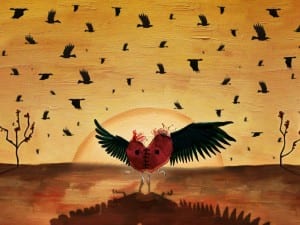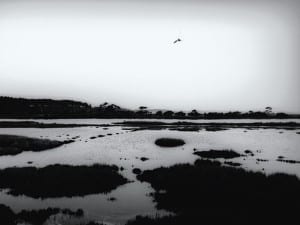HOME, Manchester’s new £25 million arts venue, presented its new gallery space last weekend with an exhibition exploring themes of love and heartbreak in the digital age.
HOME was created by merging the Cornerhouse arts centre and the Library Theatre Company. Its inaugural exhibition, The heart is deceitful above all things, presented a mixture of new commissions and existing artworks inside HOME’s new 500 square metre by 4 metre high gallery. The project, which is co-curated by Sarah Perks and Omar Kholeif, probes feelings of love and loss, of what motivates our desires and manipulates our intimate relationships, particularly in uncertain times where our society is driven by changes in science and technology.
Sarah Perks, HOME’s Artistic Director for visual arts, said: “If there’s one thing everyone has in common it must be heartbreak. The heart makes us suffer like no other organ and it often seems to both collude with us and betray us equally. It doesn’t matter if all of these exciting artists and works are new to you; because I’m fairly sure you’ve had your heart broken at least once.”
Acclaimed artist and novelist Douglas Coupland delivers the exhibition’s highlight, which visitors can see as they turn to the left when entering the new gallery. A body of numerous statements printed on watercolour paper and mounted onto aluminium, Slogans for the 21st Century (2011 to date) is the Canadian artist’s attempt to “try and isolate what is already different in the twenty-first century mind as opposed to the twentieth.”
Coupland has always been a sociological thinker; his novel Generation X popularised the term and defined the thoughts, values and idioms of twenty-somethings growing up in the early 1990s. His colourful slogans do the same for anyone who came of age during Web 2.0. Many of the quotes would be familiar to an active internet user, but would make little sense to anyone else (these include “Want To Go Private?” and “O RLY?”), and others resemble statements you would find on Reddit’s popular Shower Thoughts page (“Your Sense Of Community Is Now Something You Visit At 11.30pm On A Website”).
Offering a more macabre take on the nature of desire, however, is The Tattooed Lady (2015), a fairground-style dispensary machine created by Manchester’s own Gemma Parker. This specially commissioned work resembles a penny arcade machine from the turn of the century, which dispenses tattoo transfers inspired by true stories of love-themed body art that people regret. This was based on Parker’s research into tattooed women found at Victorian funfairs. Meanwhile, Jeremy Bailey’s inLoop (2015) takes us back to the 21st century with devices that resemble iPhones in an installation addressing the role of consumerism and software in shaping romantic entanglements.
Flaka Haliti’s I Miss You, I Miss You, ’Till I Don’t Miss You Anymore (2012-2014) is a digital video installation whereby declarations of love appear on a set of three differently coloured flatscreen monitors. The messages slowly appear on each screen, as if typed up in an email, and accompanying headsets are available to hear the messages read aloud in the monotonous voice of Google Translate. A more traditional look at romantic longing is found in Irena Gheorge’s John, You Like Her, Don’t You? 1994-1996 (2014 to date), a collection of childhood notebooks, which reveal extensive information about the best-looking boys in Gheorge’s school.
The exhibition also includes five films. Declan Clarke’s 60-minute 16mm film The Most Cruel of All Goddesses (2015) follows a covert agent investigating the life of Friedrich Engels, who resided in Manchester during the 1840s. Wu-Tsang with Alexandro Segade’s Mishima in Mexico (2012) is a short performance film based on Yukio Mishima’s novel Thirst for Love. Zina Saro-Wiwa’s video performance work Eaten by The Heart (2012) features 12 different African and diasporic couples kissing with different soundscapes in the background. Additionally, Jessey Tsang’s breathe in / breathe out (2015) uses two dancers to compare the falling out of a boy and girl with the process of decay and renewal in nature.
The more thematically tenuous works are Ragnar Kjartansson’s neon wall-art Scandinavian Pain (2006-2012), and Basim Magdy’s The Everyday Ritual of Solitude Hatching Monkeys (2014), a 13-minute Super 16mm film transferred to Full HD. The latter explores time more than love in its interweaving of different clips to produce a fragmented and dreamlike collage where sights and sounds never correspond. The overall effect, like Magdy’s C-Prints also on display on the opposite wall, is one of nostalgia for times past and of disquietude about the uncertain future.
The heart is deceitful above all things, until 26 July, HOME, 2 Tony Wilson Place, First Street, Manchester, M15 4FN. For more information visit www.homemcr.org
Charlie Bennett
Follow us on Twitter @AestheticaMag for the latest news in contemporary art and culture.
Credits
1. Basim Magdy, The Hollow Desire to Populate Imaginary Cities. Courtesy of the artist and HOME.





